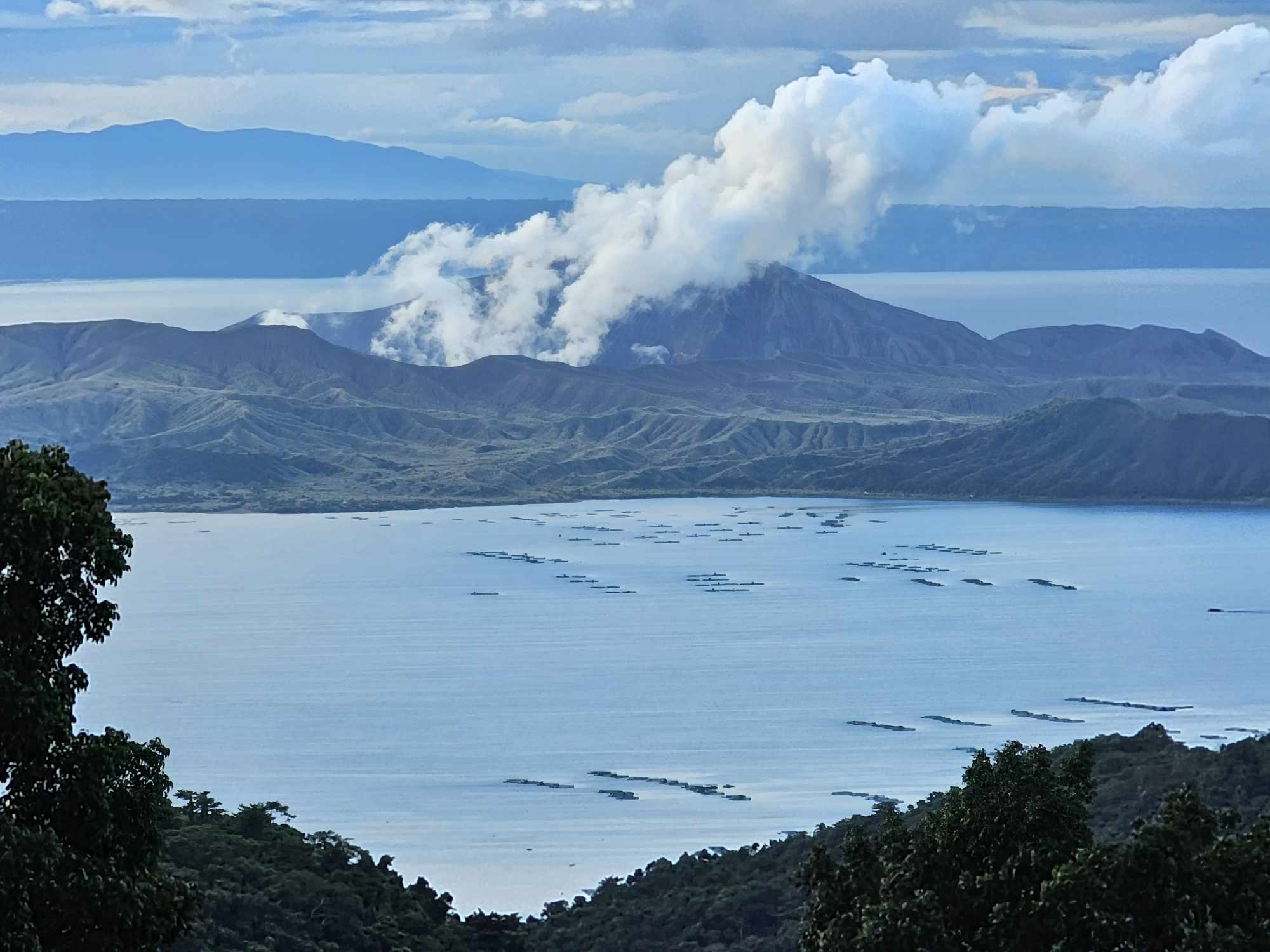
BEAUTY IN A LAKE The scenic view of Taal Volcano from Tagaytay City, Cavite, shown in this photo taken on Oct. 24, 2023, portrays calmness
amid its continued emission of toxic gas. — MARLON MALLARI / CONTRIBUTOR
LUCENA CITY – After spewing an alarmingly high volume of sulfur dioxide (SO2) more than two weeks ago, the emissions from Taal Volcano in Batangas province of harmful gas has dramatically subsided, the Philippine Institute of Volcanology and Seismology (Phivolcs) reported Sunday, April 14.
A total of only 4,709 metric tons of SO2 from the volcano’s main crater was measured over the past 24 hours and rose to 1,800 meters above Taal Volcano Island, the volcano’s crater landmass locally known as “Pulo” that sits within Taal Lake, before drifting to west-southwest direction, the Phivolcs report said.
It was a significant drop from 18,638 MT of toxic gas logged on March 28 and March 29, tagged as “the highest flux recorded this year.”
The state volcanologist still noted an “upwelling of hot volcanic fluids in the Main Crater Lake.” One volcanic tremor that lasted for six minutes was also recorded.
The latest level of emission was slightly higher than the 4,532 MT logged on March 13, which was listed as the lowest volume of sulfur dioxide emission this year.
However, the state volcanologists recorded one phreatic or steam-driven eruption that lasted for four minutes during the latest monitoring period.
The Phivolcs, in its bulletin on Saturday, said the volcano recorded “five phreatic eruption events lasting one to 13 minutes long” over the past 24 hours. The volcano also logged “15 volcanic earthquakes including six volcanic tremors” and lasted from two to four minutes long.
The Phivolcs explained that the recent phreatic eruption at Taal Volcano was probably caused by the build-up of hot volcanic gases at its main crater and more steam-driven eruptions could be expected.
However, the agency assured the public that a magmatic eruption, involving lava flow, was improbable.
READ: Taal Volcano blows off steam, but no lava—Phivolcs
Phivolcs cited the current levels of volcanic earthquake activity and ground deformation at Taal Volcano as indicators that a magmatic eruption is unlikely.
Meanwhile, the Philippine Coast Guard (PCG) stations in Batangas have been closely monitoring the activities of the volcano.
In a statement on Saturday, Commodore Geronimo Tuvilla, PCG-District Southern Tagalog commander, said their stations located in Agoncillo, Balete, Talisay, San Nicolas and Laurel towns “are tasked with maintaining continuous monitoring of activities in the vicinity of Taal Lake”.
He urged residents and visitors in areas surrounding the Taal Volcano to remain informed and be aware of the advisories issued by concerned government agencies.
Taal Volcano remains under alert level 1 (low level of volcanic unrest), which means that phreatic eruptions, volcanic earthquakes, thin ashfall and hazardous gas emissions may occur, Phivolcs said.
The agency reminded the public that Taal Volcano continued to display an “abnormal condition” and “should not be interpreted to have ceased unrest nor ceased the threat of eruptive activity.”
Taal erupted in January 2020, more than four decades after its previous eruption, sending hundreds of thousands fleeing from within the volcano’s 14-kilometer radius.